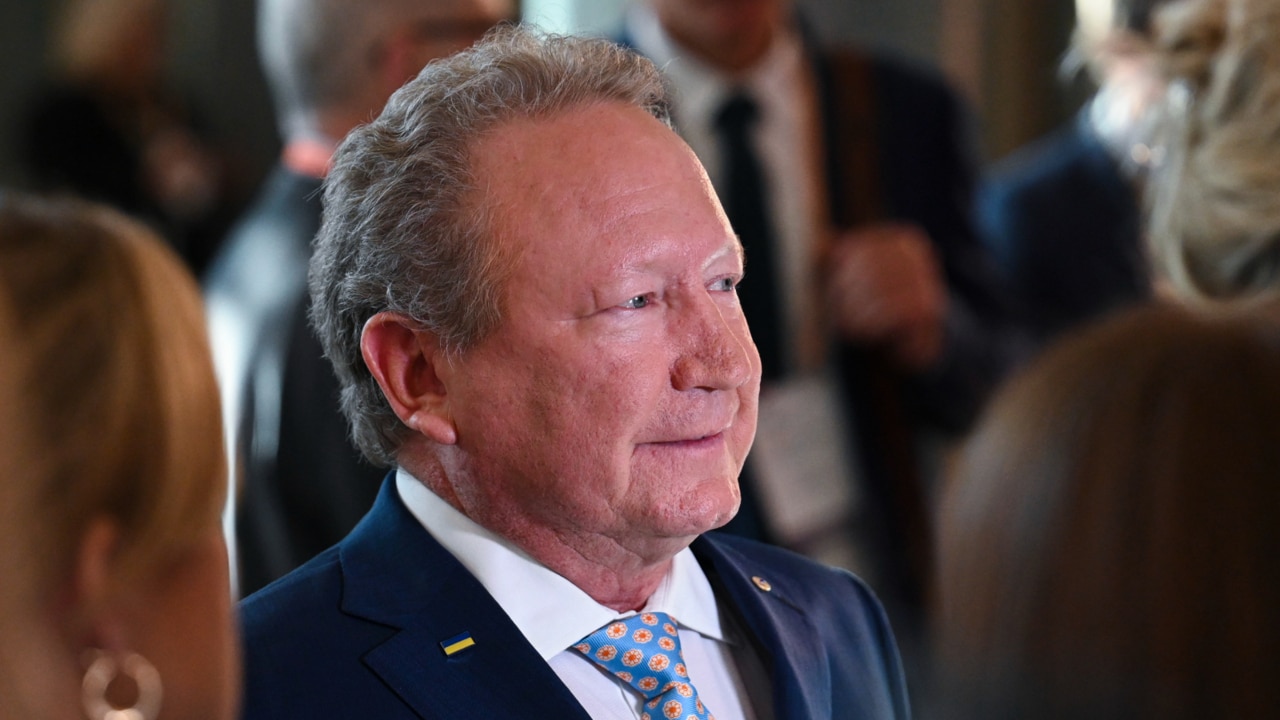BHP says electric trucks not hydrogen the key to decarbonising mines
BHP’s mines could look a little like Melbourne tramways in the future as the mining giant looks for ways to rid itself of the need for diesel fuel in its haulage trucks.

BHP will spend about $US4bn to meet its carbon reduction targets by 2030, saying hydrogen will play no meaningful role in its own strategy, with the company taking a risk that logjams in the global scramble to roll out renewable energy generation and transmission lines won’t delay plans to decarbonise its own operations.
Speaking on an investor briefing on Wednesday the company’s head of carbon management, Graham Winkelman, told analysts the company was not planning to improve on its target to reduce operation emissions by 30 per cent by 2030, saying BHP intended to “focus on action” on its scope 1 and 2 emissions.
But the move will cost the company only about $US4bn in additional spending by the end of the decade, far less than the $US7.5bn flagged by chief rival Rio Tinto – although Rio has also signed up to the more ambitious goal of halving its operational emissions by the end of the decade.
Like other mining and industrial majors, BHP has been under activist pressure to improve its carbon emissions targets, but Dr Winkelman said on Wednesday the company was focused on an achievable strategy to meet its existing goals.
He said the company had already reduced its operational emissions by 24 per cent compared to 2020 levels, primarily through the use of renewable energy at its giant Escondida mine in Chile.
But the difficulty in removing diesel from its profile – needed to power trucks on its massive mine sites – remains the company’s biggest issue.
BHP had about 14 million tonnes of carbon equivalent emissions in 2020, down to just under 12 million tonnes at the end of the 2022 financial year.
BHP’s presentation suggests that total is expected to grow by about 2 million tonnes, through “organic growth” at its global operations – to be offset by the acquisition of a bigger total of renewable power purchase agreements.

Rather than follow the example of Rio and Fortescue Metals Group, which have both flagged substantial investment in dedicated wind and solar power, BHP will instead rely on others to roll out generation and transmission assets, and will buy the power from external providers as a major leg in its decarbonisation plans.
Rio has committed to building 1 gigawatt worth of wind and solar in the Pilbara by 2030 to advance its own plans, and has said it may need to triple that – as well as a “significant investment” in transmission lines – to help electrify its fleet of diesel trucks and trains beyond that point.
In the Pilbara, BHP plans to build only 500MW of renewable generation and storage, leaving its gas-fired generator at Newman as the central plank in its energy needs past the end of the decade, hoping that a long-awaited deal between all of the major iron ore producers in the region over generation and transmission assets will deliver it longer-term reduction benefits.
But the company flagged only a minimal reduction in its diesel use by 2030, given the difficulty in fully electrifying its remote mines.
Vice-president planning and technical Anna Wiley told analysts the company did not believe hydrogen would play any meaningful role in the company’s plans over the next decade, saying hydrogen fuel cells would be a far less efficient means of decarbonising its fleet and equipment.
Instead the mining giant plans to eventually adopt battery powered trucks and equipment, preferring to fully electrify its mines rather than retain combustion engines – even ones powered by green fuels such as hydrogen.
“Our view is that an electrified mining fleet is more economical and achievable than alternatives such as hydrogen,” she said.
But the full conversion of BHP’s vast fleet of trucks and diggers is unlikely to be possible in the near term and the company will instead rely on intermediate technology to make shorter-term gains.
The most likely interim step will be use of so-called “trolley assist” systems at major mines such as the giant Escondida copper operation in Chile.
Under the system, which BHP will begin to roll out in the 2028 financial year at Escondida, the company will build transmission lines similar to those used by electric trams in Melbourne to partially supply power to trucks running up and down its haul roads at open pit mines.
Trucks will retain diesel engines as backup initially, before BHP eventually converts all of its fleet to fully electric motors.





To join the conversation, please log in. Don't have an account? Register
Join the conversation, you are commenting as Logout